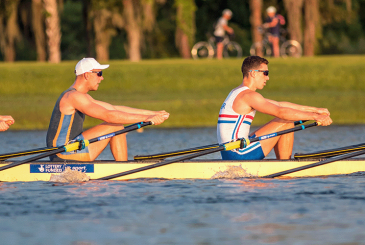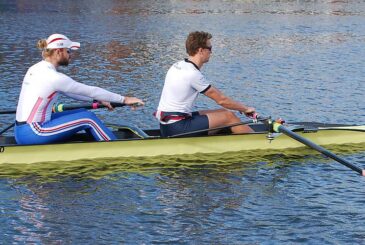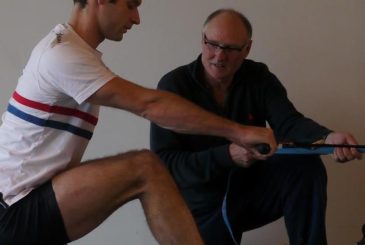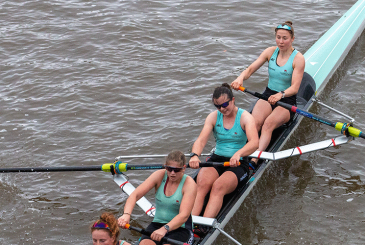Olympic gold medallist Anna Watkins shares her trusted routines to help you sharpen your technique
Exercise 1: Blades on the water
You’re never too good for some paddling with blades on the water. It’s not only that it takes balance out of the equation, it allows you to reset your reference points and patterns.
Start by spending time reminding yourself of the basic sequences- legs-body-arms on the drive, and arms-body-legs on the recovery. Enjoy the simplicity of this, and try to remove any excess tension. Notice quads, glutes, lats and core working, try to relax all other muscles. When you take the blades off, try to change as little as possible – only that modest change to recovery hand heights – and preserve the relaxation. Switch between blades on and blades off a few times.
Now for reference points. Really try to notice, with the blades on, where exactly are your hands being taken to for the catch? When you switch to blades off, you can then focus on ensuring your hands come to this precise height as you come forward. If you miss the catch, as nearly everyone does, your hands would usually be too low as you arrive at the catch, only getting high enough after you have already changed direction.
Exercise 2: Pauses (also known as single strokes)
Absolutely brilliant for getting the balance, timing and clarity about body positions between the crew. Even in a single I did loads. The key point is that each time you pause, you also relax. I like to pause every other stroke so that you keep the boat moving. I like to start with a single pause, and then add another and another, so that you are moving as a crew from pause to pause at a quarter, half and three-quarters slide. I also like to change direction and maybe do a pause at half slide, then back to a quarter, then out all the way to take the stroke. This sets reference points between the crew, improves balance, and improves relaxation.
It would be a miracle if catches weren’t a bit soggy after so long off
Exercise 3: Rate changes
Now we should have a good pattern and a relaxed stroke, it is time to think about how you want to add power.
You can create a fantastic chunky rhythm that combines both power and relaxation with some rate 16 and 18 or some rate 18 and 20. Do 30 strokes, or 250m, at one rate before alternating to the next one. When you step up, begin with a squeeze with the legs, but very importantly add more and more acceleration through the stroke, so that your movement speeds up as the boat speeds up in the second half, and you finish with a lovely dynamic body swing and fast moving hands.
When you step down, be clear in the crew about where you want to take the extra time. This is one of those aspects of rowing that is down to preference. I have rowed in crews that like to take the time after quarter slide, and others where there has been more of a pause at the finish. I don’t believe it matters hugely so long as you all agree!
As you take the time, deliberately relax, particularly shoulders. The idea is that you keep hold of the positive changes every time even when you swap the rates again, so after a few rate changes you create a better rhythm all round.
Enjoy the sheer pleasure of being in the great outdoors on the actual water and get the air in your lungs!
Exercise 4: Front stops build
I love the front stops paddling exercise for sharpening up my catches. With a stationary boat, come to the catch and properly bury your blades. Look to check!
Using the power from just your legs – no body at all – begin to take legs only strokes. It’s actually easier with square blades as there is less to do. The stroke reduces to two movements: hands up and down, and legs bend and straighten. The catch is as simple now as making these two movements exactly in time.
As you get better, the challenge is to make the stroke shorter and shorter, so you are only taking the first two inches of the stroke. This requires extremely precise catch timing. This is a tough exercise on your back, so do take breaks, or alternate between the exercise and some full slide paddling.
‘Exercise’ 5: Go the distance
You’d be missing all the fun if you spend the whole outing doing exercise after exercise. Spend at least half of the session getting some continuous paddling under your belt. Keep your focus – and the calls – on the basics from the earlier exercises, but make sure you also enjoy the sheer pleasure of being in the great outdoors on the water!










